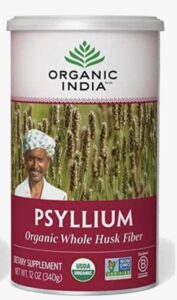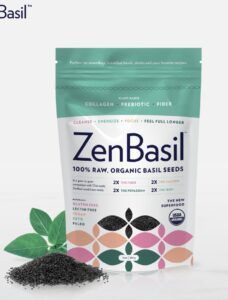BREATH AND HEART

I will load each week’s content below in the tabs. The most current week will show first in blue, but you’ll be able to click the boxes in grey beside the blue tab to view previous content.
One inspiring cue:
While in a Runners Lunge with your right leg forward and your hands on the ground, drive your heart forward as your right hip crease pulls back.
Why?
Many people tend to round (too much) in their spine while in Runners Lunge, which can make it harder to take a comfortable breath. By using this cue, you will not only notice a lengthening in the spine, but you will also allow the breath to circulate and flow more freely throughout the body.
One inspiring tip:
Place each hand on a block in your Runners Lunge and feel your spine and breath thank you…AHHHH!
One inspiring song:
“Deep Connection” by Rob Riccardo, Slow Traverse
One inspiring quote:
“Feelings come and go like clouds in a windy sky. Conscious breathing is my anchor.”
– Thich Nhat Hanh
Nutrition nugget:
Add tumeric to your diet to help lower cholesterol! It’s incredible how food can have a monumental effect on our blood levels and can oftentimes help (if not cure) some common complaints.

Cholesterol is a hot topic in the nutritional world right now. Specifically, the question of whether or not cholesterol and heart disease are correlated. As I’m learning, not necessarily. This correlation depends on blood markers and numerous other factors. Are you or someone you love on the high-end of “normal” cholesterol levels and looking to lower them?
If so, here’s what Andrea Nakayama, the leader of the nutrition course I’m taking, has to say about plant sterols and tumeric and how they can help lower the “bad” kind of cholesterol. “Any plant sterols or phytosterols are like cholesterol for the plant – they are what heals the plant.
Studies have shown, and now even the FDA admits, that plant sterols reduce cholesterol by inhibiting intestinal absorption…Tumeric is an amazing herb, it’s active constituent or phytonutrient is called curcumin, which has many tricks. It prevents oxidation of cholesterol, which is what damages the arteries and causes plaque. Incorporating this into your diet really sounds like treating the root cause.”
You need to be your own health advocate! Think about this…would your Dr. recommend tumeric/plant sterols as something to try before taking traditional drugs if you’re borderline high in your cholesterol levels?
What about increasing your fiber (see my last newsletter) to help lower cholesterol? Most doctors admit they are not well-versed when it comes to foods and supplements that may be able to help with their patients’ ailments. This is because they are only required to take ONE nutrition class in med school!
I love learning about the latest in nutrition and health and will pass along as much as possible from my Functional Nutrition course. If you like this kind of “brain food”, you can also follow me on Instagram where I post food content and tips in my stories quite often.
Note: always check with a Dr. or pharmacist if you are on other medications to make sure there are no contraindications when taking certain supplements.
Here’s to a healthy heart and lots of love this month!!
One inspiring cue:
Did you know that when you exhale, your heart rate will slow down a little? This is one of the reasons that deep breaths are associated with relaxation.
Why?
When you exhale fully, you stimulate your Vagus nerve (see image below). Your Vagus nerve activates your parasympathetic system…aka your ‘rest and digest’ system.

The following quote from Dr. Liz Miller, a former neurosurgeon, psychologist, and author, further explains the benefits of taking full, deep breaths. “The emphasis is getting people to breathe right because it profoundly affects HRV (Heart Rate Variation). HRV is largely due to the changes that occur during breathing – breathe in, heart rate goes up – breathe out, heart rate goes down. The greater the changes between breathing in and breathing out, the healthier and fitter your heart, lungs and autonomic (sympathetic and parasympathetic) system.” Pretty cool, right?
One inspiring tip:
Take your pulse on your wrist before you begin a yoga practice. Then, during class when you’re practicing deep breathing, take your pulse again and see if you can notice a difference in your heart rate.
One inspiring song:
“more than love” – Sofi Tukker Remix by Trevor Hall, Sofi Tukker
One inspiring quote:
“Keep Calm and Breathe Deeply.”
Nutrition nugget:
Each month in my Functional Nutrition Program, we cover a different system in the body. Last month we explored the cardiovascular system. There is SO much to cover, but here’s a little something I learned you may want to consider.
Andrea Nakayama, the leader of my Program, interviewed a cardiologist and he had this to say about the importance of fiber. “Fiber was the number one food predictor of not having a lot of plaque in your arteries…in particular, I look at vegetables, fruits, beans, and nuts.”
In an article from Healthline, they reported, “Fiber’s presence in the digestive tract can help reduce the body’s cholesterol absorption. This is especially true if you take statins, which are medications to lower cholesterol, and use fiber supplements like psyllium fiber.”
The more I read about the benefits of fiber, the more I love it! Do you know how much fiber you should be getting in a day? Functional Nutrition likes you to be around 25-30 grams for a woman and 35-40 grams for a man per day. One thing you might want to be aware of is that even though vegetables have fiber, many of them don’t have as much as you may think. Here are some high fiber foods:
1) Raspberries: 8 grams per cup
2) Artichoke: 8 grams in one medium
3) Pumpkin seeds: 4 grams in 1/4 cup
4) Avocado: 10 grams per cup
5) Broccoli: 2.4 grams per cup
6) Kale: 3.6 grams per cup
7) Brussel sprouts: 3.3 grams per cup
Can you see how many vegetables you would need to eat to get all of your necessary daily fiber? I like to add 2-3 cups of veggies to a smoothie. You can check out some of my smoothies and other easy recipes on my Instagram page. Just click on the “Food Favs” icon!
Other easy ways to add fiber are:
1) Add a tbsp of psyllium husk (Whole Foods or Amazon) to your eggs and mix well. You’ll add 8 grams of fiber and your eggs will be fluffier!

2) Add ZenBasil seeds to water, your smoothie, or on top of a salad. One tbsp will give you 4 grams of fiber…plus they have a nice amount of calcium and other nutrients. You can also find a ton of recipes on the ZenBasil site.

If you’re not used to eating a lot of fiber, add it in slowly over a period of a few weeks. And drink plenty of water!!
